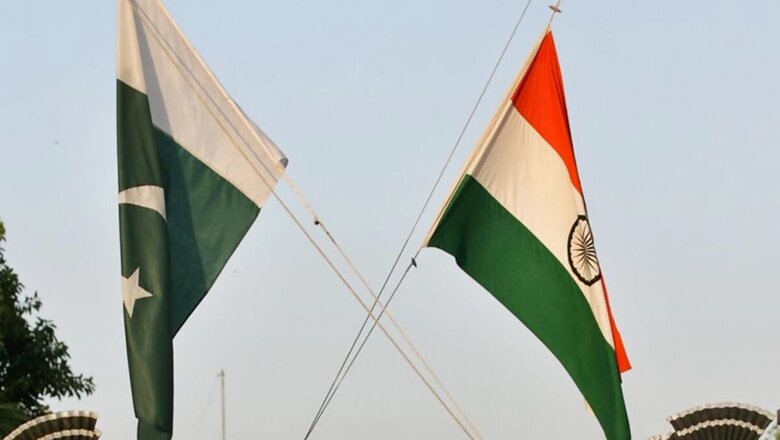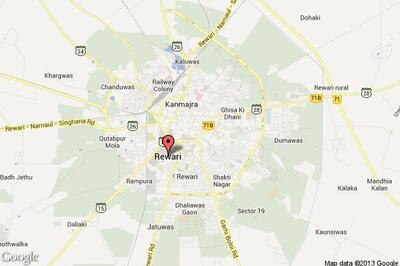
views
The Line of Control has a deep linkage with the term ceasefire. In fact, till 1972 it was called the Ceasefire Line (CFL). CFL had come into being on January 1, 1949, along the alignment on ground where the Indian and Pakistani armies halted their operations at the end of the Indo-Pak War of 1947-48; it became a de-facto interim border, not a real one. In 1972 after the Shimla Agreement, it was revalidated as the Line of Control (LoC) by the Suchetgarh Agreement of December 1972.
Thereafter, peace has prevailed along the LoC in bits and pieces. After 1989, when Pakistan commenced the proxy hybrid conflict in Jammu and Kashmir, ceasefire violations (CFVs) became the norm as terrorist infiltration and induction of military wherewithal from Pakistan-occupied Kashmir (PoK) under covering fire was an adopted strategy by anti-India elements. Violation of the ceasefire agreement was also resorted to sometimes when there were deliberate or inadvertent crossings by civilians, service personnel or animals.
It was also usual to expect exchange of fire when either side attempted to construct field fortifications which could substantially improve the capability of a post or piquet; for example an emplacement for a direct firing artillery gun. Local battles of high intensity were fought at certain points along the LoC when attempts to forcibly change the status quo were made. In the 1990s, Pakistan commenced trans-LoC raids with elements comprising its Special Forces mixed with well-trained terrorists; these were called Border Action Teams or BATs. India did respond in kind but none of these actions by either side had official ownership. It is for these reasons that the LoC came to be known as one of the most dangerous places on Earth, completely unpredictable and a potential source for triggering conflict between two nuclear-armed nations.
When General Pervez Musharraf as President of Pakistan changed tack and adopted an approach of negotiating peace with India in 2003, it was almost imperative that the existing ceasefire agreement which dated back to the Shimla Agreement needed to be reiterated. It happened with the ‘unwritten agreement’ between the Director Generals of Military Operations (DGMOs) which brought about a ‘reiterated ceasefire’ on November 26, 2003. Interestingly, this ceasefire held without any major violations in the first few years. From 2007 onwards, there were violations primarily south of the Pir Panjal range in the area of Mendhar.
In addition, a little-realised fact is that the ceasefire actually assisted the Indian Army in the construction of the Anti-Infiltration Obstacle System (AIOS) or commonly known as the LoC Fence. I remember that in the period April-November 2003, the construction work close to the LoC was hotly contested and interfered with, forcing some of our alignments to be relocated in depth, under cover from direct fire. As soon as the ceasefire came into being in November 2003, the alignments could be shifted closer to the LoC, making the effectiveness against infiltration much higher.
The reason why the ceasefire remained in place for fairly long was the political and diplomatic engagement which followed the decision of November 26, 2003. A back channel worked at the special envoy level for some years. It was the Mumbai terror attack (26/11) which upset the stability brought by the ceasefire. The engagement dwindled and it was downhill thereafter as far as the relationship was concerned. Surprisingly, the ceasefire continued to hold albeit with increasing CFVs in the Jammu region. From 2014 onwards, exchanges increased in a marked way. The prime reason for this was the creeping normalcy which was coming into the Kashmir Valley due to the effective Indian strategy of engaging the people and improving governance.
With the proxy conflict perceived to be slipping out of its hands and J&K increasingly getting forgotten by the international community, Pakistan stepped up CFVs with a clear strategy in place. The LoC was then used to message the international community about the dangers of potential war. The phenomenon of civilian casualties caused by Pakistani fire and Indian response was played up strategically. In fact, once the NDA government came to power in 2014, Pakistan chose to target the inhabited areas on the Indian side of the international border between Jammu and Kathua in an attempt to create a piquant communal problem in Jammu region. As a result, the nuisance value of CFVs multiplied manifold. The period of 2014 to 2020 witnessed a progressively increasing quantum of CFVs with resultant casualties on both sides. No political or diplomatic engagement between the two countries was institutionally in place.
To expect an unwritten military reiteration of ceasefire to then remain in place was expecting the moon and that is what led to the deterioration of the situation along the LoC. Somewhere in the middle of all this the phenomenon of infiltration linked to CFVs started to dwindle and resort to silent infiltration became the norm at least in the Kashmir sector of the LoC. The abrogation of Articles 370 and 35A on August 5, 2019, and the proactive and extraordinary security measures undertaken in the hinterland diluted Pakistan’s calibration capability to a great extent. The only place left for it to show its initiative and concern for J&K was at the LoC through CFVs.
It’s surprising that within a year and a half of the big decisions by the Indian government, Pakistan has felt the compulsion to enter into some backroom engagement to eventually bring about a recommitment to the November 2003 ceasefire; the latter itself was a reiteration, it may be recalled.
It is essential that if the ceasefire has to be effective, additional measures must follow. The need for trans-LoC communications links at least at the brigade level cannot be overemphasised. Communication links at the DGMO level are good but do not allow field consultation and routine buildup of trust through periodic communication. The resumption of other activities with a roll back to 2008, including trans-LoC passenger buses and even trade could be ensured but with far greater foolproof care.
The reasons for the current ceasefire are yet being determined and could also be linked to the improvement in the post-Trump environment of the world at large and to the PLA’s disengagement in Ladakh. Whatever are the reasons, it will need an extra special effort to ensure maintenance of sanctity of the ceasefire. An engagement at politico-diplomatic level without a Pakistani commitment against the use of terror as a weapon is very unlikely. Pakistan is likely to insist on the use of UN military observers as monitors, something which goes against the spirit of the Shimla Agreement and is unacceptable to India. We await further developments and hope for a positive turn.
[The author is a former Commander of the Srinagar-based 15 Corps and now the Chancellor of the Central University of Kashmir and Member, National Disaster Management Authority (NDMA). Views are personal.]
Read all the Latest News, Breaking News and Afghanistan News here


















Comments
0 comment